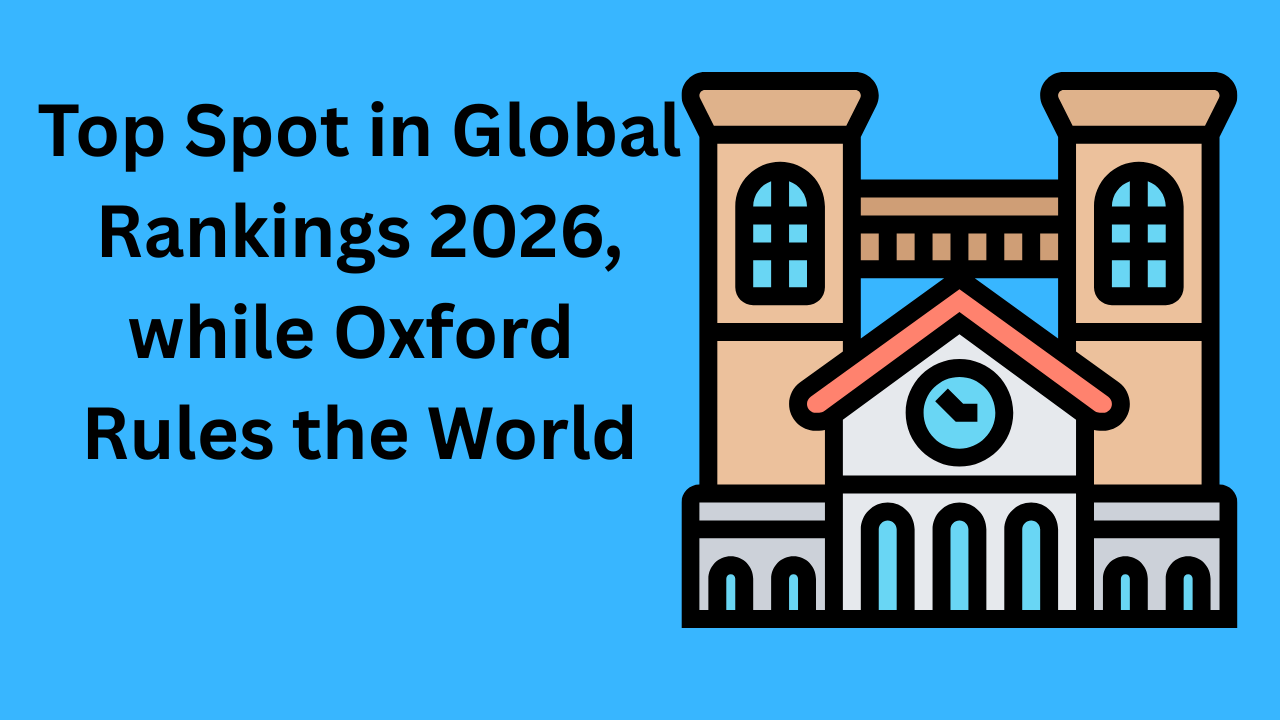When the 2026 THE (Times Higher Education) World University Rankings were unveiled, many eyes were on where India’s institutions would land. Once again, the Indian Institute of Science (IISc), Bangalore emerged as the highest-ranked institution from India — though it still hovers in the 201–250 bracket globally. Meanwhile, the University of Oxford held its crown at the very top, securing the No. 1 rank for the tenth consecutive yea
Table of Contents
Toggle Best Highlights at a Glance
Best Highlights at a Glance
Oxford remains world leader for the 10th straight edition of THE rankings.
IISc Bangalore retains its status as India’s top institution, appearing in the 201–250 global rank band.
No Indian university made it into THE’s top 100.
Several Indian universities either held steady or moved slightly upward in the 300–600 rank band.
Globally, THE notes a stagnation among Asia’s elite institutions and a relative decline in some U.S. universities
India’s Performance: A Snapshot
Here’s a rough table showing how some Indian institutions were ranked in THE 2026:
| Rank Band | Indian University / Institution |
|---|---|
| 201–250 | IISc Bangalore (top among Indians) |
| 351–400 | Saveetha Institute of Medical & Technical Sciences |
| 401–500 | Jamia Millia Islamia, Shoolini University |
| 501–600 | Banaras Hindu University, IIT Indore, LPU, Mahatma Gandhi University, UPES |
| 601–800 | Aligarh Muslim University, Amity (Noida), Bharathiar, Chitkara, NIT Rourkela, etc. |
What the Rankings Suggest (and What They Don’t)
Strengths & Bright Spots
Consistency for IISc: Maintaining the top Indian position signals sustained research, academic quality, and institutional reputation.
More Indian representation: Although not in the very top, several Indian universities moved or held ground, showing gradual progress.
Global shifts: The broader trend sees Asia’s gain slowing and U.S. institutions slipping somewhat — a reminder that rankings are dynamic.
Challenges Ahead
Breaking the top 100 ceiling: India still has no entry in THE’s top 100 — the gap to reach that threshold remains steep.
Internationalization & reputation: These are key metrics in THE’s methodology; improving faculty exchange, student mobility, and citation impact are critical.
Resource constraints: Funding, infrastructure, faculty incentives and research support will need to scale up.
More equity among institutions: The top few dominate; bringing a larger base of Indian universities into higher bands is a long road.
Why Oxford Still Stands Out
Oxford’s reign isn’t accidental — it combines historical legacy with modern excellence:
Strong performance in research output, citations, teaching, and global reputation
Broad international collaborations and able to attract top talent worldwide.
Institutional resilience through changing policy climates, funding pressures, and global competition.
In many ways, Oxford sets the aspirational benchmark not just for UK or U.S. universities, but for ambitious institutions all over the world.
What Indian Universities Could Focus On
To move upward, here are some actionable strategies:
Boost research impact: Encourage high-quality publications, collaborative research, interdisciplinary projects.
Enhance global ties: Partner with international institutions, expand exchange programs, joint PhDs, visiting scholar schemes.
Improve governance & autonomy: Allow institutions flexibility in recruitment, infrastructure, and strategic decision-making.
Faculty development & retention: Invest in rewarding strong teaching, research, and mentorship; attract diaspora academicians.
Student & industry engagement: Marry academic rigor with innovation, entrepreneurship, internships, and real-world problem solving.
The 2026 THE rankings reaffirm that IISc Bangalore remains India’s academic flagship, while Oxford continues to dominate on the world stage. But the bigger news lies in context: for India to climb further, it must widen its base, push for research excellence and global integration, and nurture many more institutions capable of reaching international significance.
These rankings are not the final word — they’re snapshots of where we are now. The real story is how institutions respond, adapt, and strive to excel in the coming years.
If you like, I can also prepare a version optimized for SEO (with target keywords) or a shorter “news-style” summary. Do you want me to do that?

